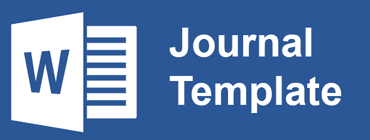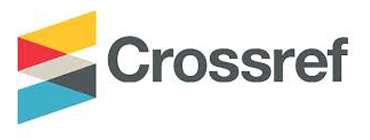AN ANALYSIS OF STUDENTS’ GRAMMATICAL ERRORS IN WRITING REPORT TEXT AT ELEVENTH GRADE SMAS TAMANSISWA SINGOSARI MEDAN
Abstract
This study, titled “An Analysis of Students’ Grammatical Errors in Writing Report Text at Eleventh Grade SMAS Tamansiswa Singosari Medan”. The study aimed to find out what types of grammatical errors in the students' report text writing and the causes of the errors. The research employed a descriptive qualitative method, focusing on 11th-grade students from the IPS2 class at SMAS Tamansiswa Singosari Medan. Data collection was conducted through documentation and interviews. The analysis followed the steps outlined by Gass and Selinker, which included collecting the data, identifying students’ errors, classifying errors, and analyzing cause of error. The findings revealed four types of errors in the students' report texts: omission, addition, misformation, and misordering, totaling 44 errors. Specifically, there were 10 omission errors (22.72%), 13 addition errors (29.54%), 12 misformation errors (27.27%), and 9 misordering errors (20.45%). The most frequent error type was addition, with the total 13 or 29.54% errors. The causes of these errors were identified as carelessness, influence from the first language, and issues with translation.
Full Text:
PDFReferences
Abbas, Saleh. (2006). Pembelajaran Bahasa Indonesia Yang Efektif di Sekolah Dasar. Jakarta: Departemen Pendidikan Nasional Diertorat Jendral Pendidikan Tinggi Direktorat Ketenagaan.
Agustin, Tuti dkk. (2020). Kita Menulis Merdeka Menulis. Yayasan Kita Menulis
Biber, D., & Conrad, S. (2019). Register, Genre, and Style. Cambridge University Press.
Burt, M. K & Kiparsky. (1974). Error Analysis in the Adult EFL Classroom. TESOL Quarterly, 9(1), 53-63. Mass: Newbury House.
Corder, S. P. (1967). The Significance of Learners’ Errors. Error Analysis: Perspectives on Second Language Acquisition. London: Longman.
Dewi, U. (2019). Peer Feedback in Reviewing Essay. SALTeL Journal (Southeast Asia Language Teaching and Learning), 2(2), 1-7. https://doi.org/10.35307/saltel.v2i2.26.
Dulay, H., Burt, M., & Krashen, S. (1982). Language Two. New York: Oxford University Press.
Ellis, R. (2017). Understanding Second Language Acquisition (2nd ed.). Oxford University Press.
Gass, S. M., Selinker, L. (2008). Second Language Acquisition: An Introductory Course. New York: Routledge Taylor and Francis Group.
Graham, S., & Perin, D. (2020). Writing for second language learners: Challenges and strategies. Journal of Second Language Writing, 48, 1-12. https://doi.org/10.1016/j.jslw.2020.100735
Hasyim, S. (2002). Error Analysis in the Teaching of English. K@ta: a biannual publication on the study of language and literature. 4(1), pp. 62-74. https://doi/10.9744/kata.4.1.62-74.
Jamaliah, Ramlan, Fauziah, etc. (2020). The Errors Analysis of Students’ Grammatical Writing on Narrative Text. Budapest International Research and Critics Institute-Journal (BIRCI-Journal). 3(3), 1826-1837. https://doi.org/10.33258/birci.v3i3.1115
Knapp, P., & Watkins, M. (2020). Genre, text, grammar: Technologies for teaching and assessing writing. Macmillan Education.
Lestari, N. S. (2023). Grammatical Errors in Writing Narrative Text at SMP Negeri 1 Secanggang. Journal Of Classroom Action Research, 2(1), 31-36. https://journal.eltaorganization.org/index.php/jcar.
Li, X., & Zhang, Y. (2023). Challenges in English Writing: The Impact of Native Language Differences on Grammar and Structure. Journal of Language Teaching and Research, 14(2), 215-230. doi:10.1234/jltr.2023.01402
Norrish, J. (1983). Language learners and their errors. London: The Macmillan Press.
Nurrahmi, R., & Indihadi, D. (2020). Analisis Keterampilan Menulis Teks Prosedur Siswa Kelas IV. Pedadiktika: Ilmiah Pendidikan Guru Sekolah Dasar, 7(2), 83-92.
Saputri, N., Ridha, Ilma., and Dalilan. (2023). Grammatical Error Analysis on Students’ Argumentative Essay Writing. English Community Journal, 7 (2): 93–102.
Wardah. (2018). An Analysis of Grammatical Errors in Students’ Writing Descriptive Text at Eighth Grade of State Junior High School 16 Jambi City. In Sulthan Thaha Saifuddin Islamic University. 9 (1).
Refbacks
- There are currently no refbacks.

This work is licensed under a Creative Commons Attribution-NonCommercial-ShareAlike 4.0 International License.
INDEXING
Bright Vision by UIN Sumatera Utara Medan is licensed under a Creative Commons Attribution-NonCommercial-ShareAlike 4.0 International License.
Based on a work at http://jurnaltarbiyah.uinsu.ac.id/index.php/brightvision.









